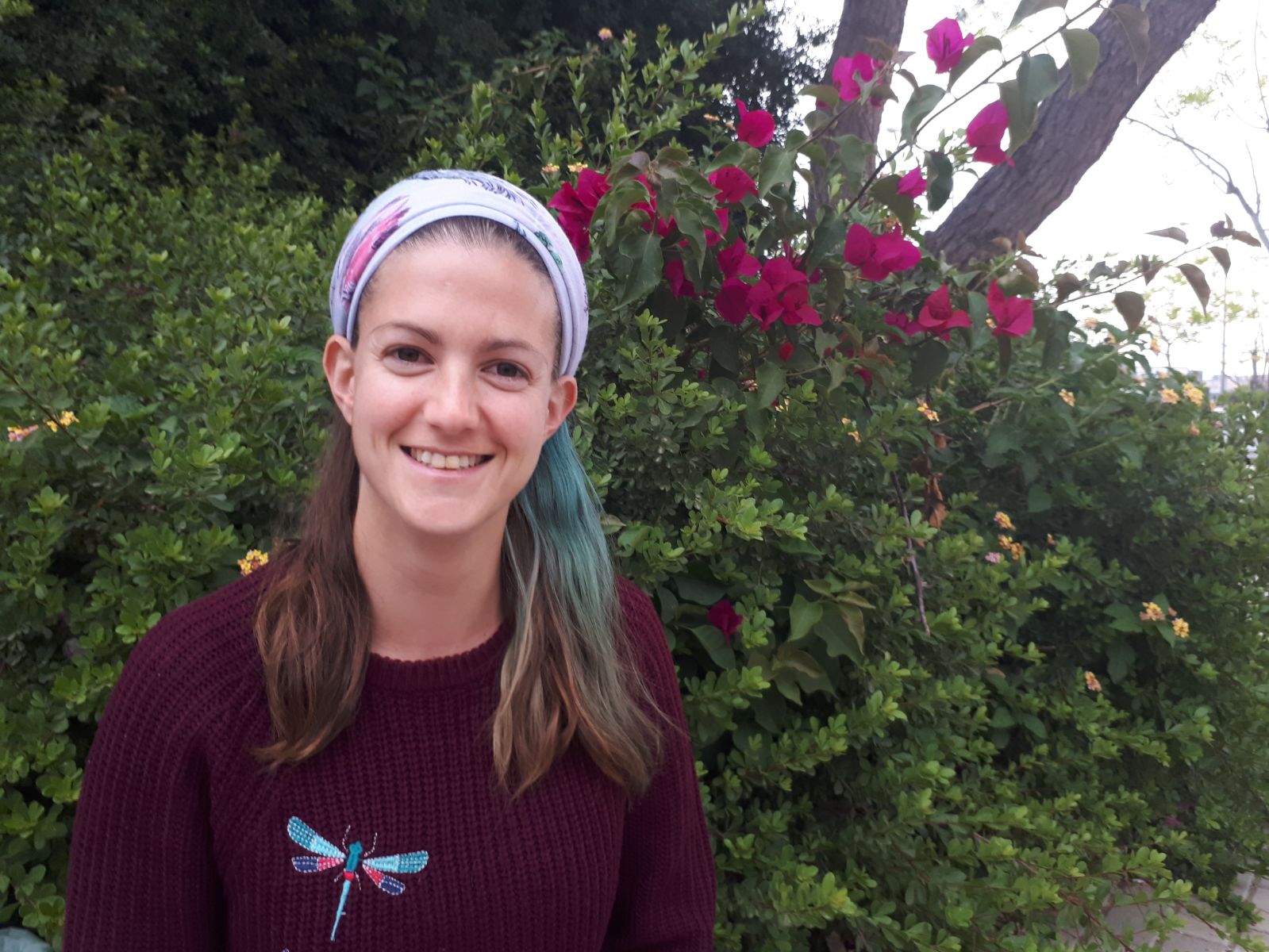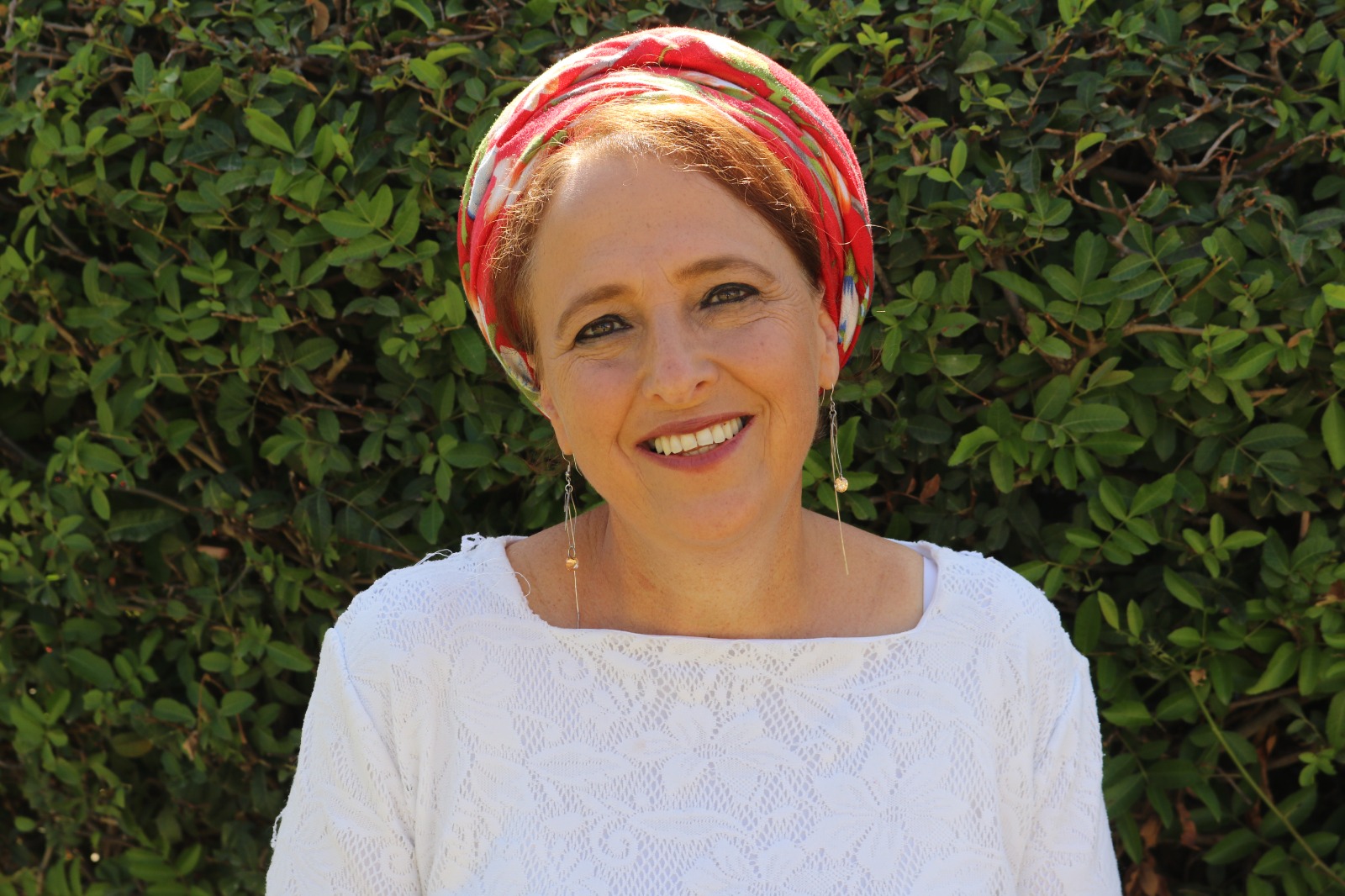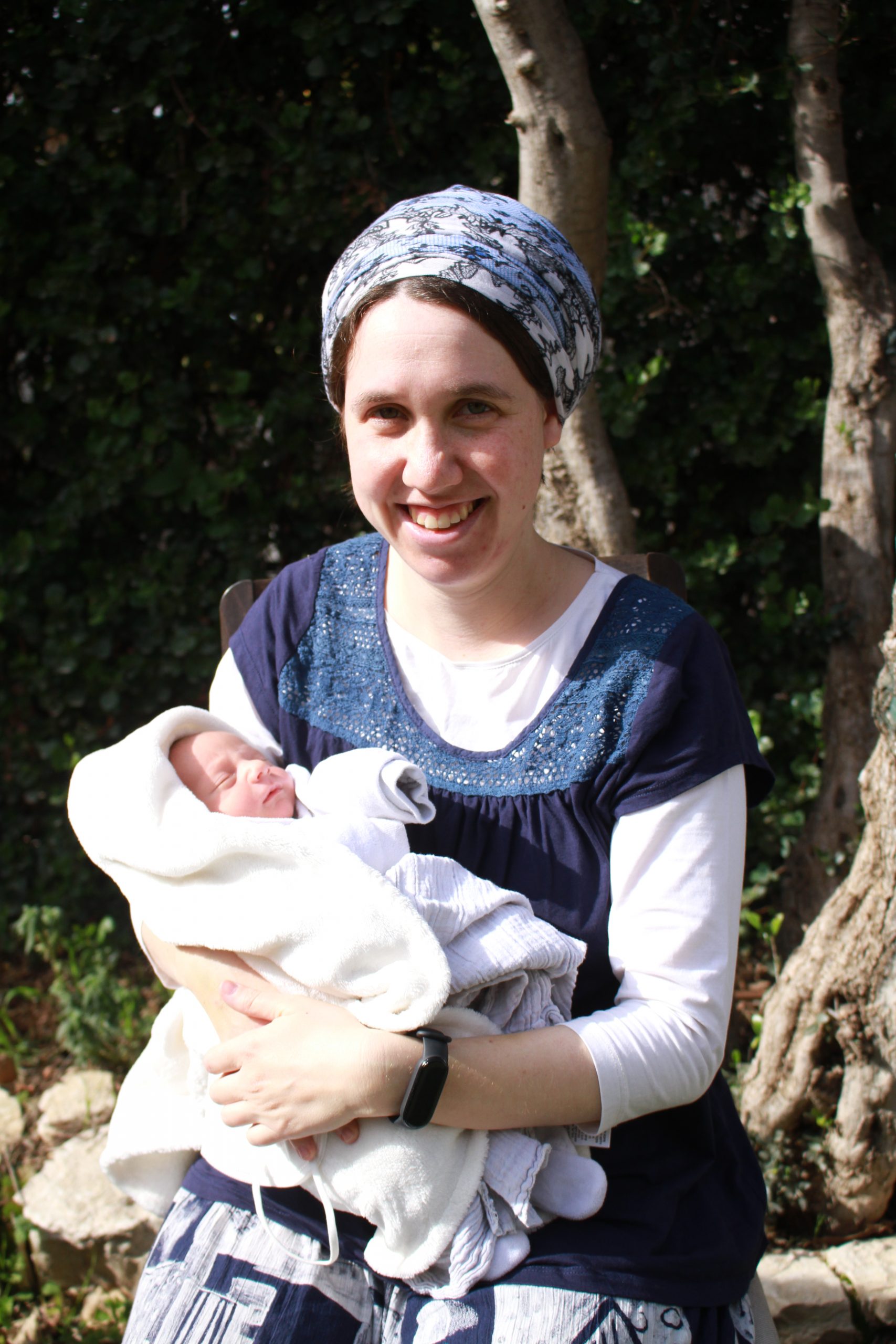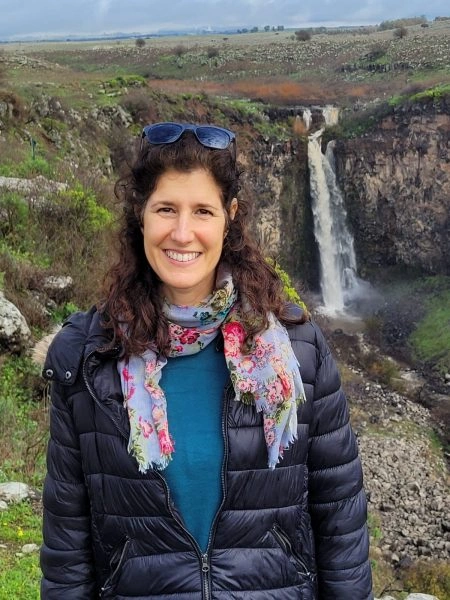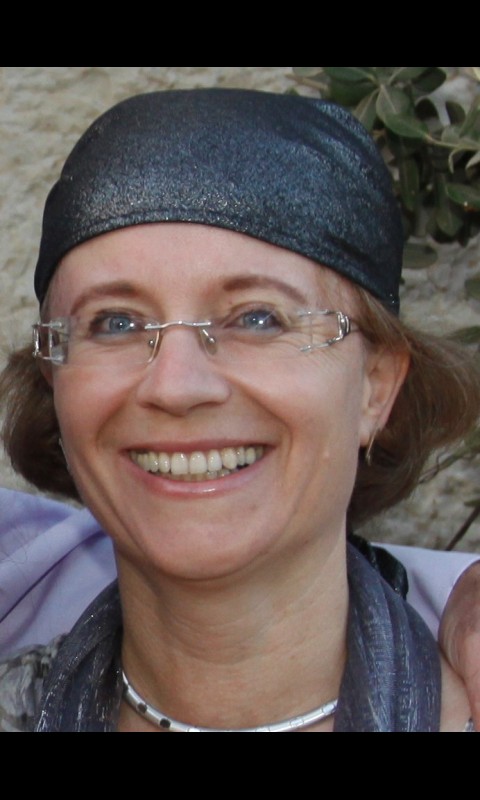הגמרא ממשיכה בדינים שונים באותו ואת בנו.
לימוד השבוע מוקדש ע”י טינה לם לע”נ יצחק מאיר בן הרב צבי אריה ואסתר בתיה.
רוצים להקדיש למידה? התחל כאן:
לימוד השבוע מוקדש ע”י טינה לם לע”נ יצחק מאיר בן הרב צבי אריה ואסתר בתיה.
העמקה
רוצה להבין מה באמת קורה מתחת לפני השטח של הסוגיה?
שיעורים, פודקאסטים והרחבות של מיטב המורות שלנו יפתחו לך עוד זוויות וכיווני חשיבה.
חדשה בלימוד הגמרא?
זה הדף הראשון שלך? איזו התרגשות עצומה! יש לנו בדיוק את התכנים והכלים שיעזרו לך לעשות את הצעדים הראשונים ללמידה בקצב וברמה שלך, כך תוכלי להרגיש בנוח גם בתוך הסוגיות המורכבות ומאתגרות.
פסיפס הלומדות שלנו
גלי את קהילת הלומדות שלנו, מגוון נשים, רקעים וסיפורים. כולן חלק מתנועה ומסע מרגש ועוצמתי.
חולין עב
והא עובר וחיה דכשתי טבעות דמו וקא מטמא לה עובר לחיה
The Gemara objects: But what about the mishna’s case of a dead fetus in its mother’s womb, and a midwife who touched it there, which is similar to the case of two swallowed rings, and yet the mishna rules that the fetus renders the midwife impure.
אמר רבה שאני עובר הואיל וסופו לצאת אמר רבא עובר סופו לצאת טבעת אין סופו לצאת אלא אמר רבא פומבדיתאי ידעי טעמא דהא מילתא ומנו רב יוסף
Rabba said: A fetus is different from a ring in this regard, since it will ultimately leave the womb. Rava said in puzzlement: Is that to say that a fetus will ultimately leave the womb, but a ring that someone swallowed will not ultimately leave his body? A ring will certainly be expelled eventually as well. Rather, Rava said: The scholars of Pumbedita know the reason for this matter, and who is the Sage referred to as the scholars of Pumbedita? It is Rav Yosef.
דאמר רב יוסף אמר רב יהודה אמר שמואל טומאה זו אינה מדברי תורה אלא מדברי סופרים מאי אינה מדברי תורה אלא מדברי סופרים דלא תימא אליבא דר’ עקיבא דאמר עובר במעי אשה טמא אלא אפי’ לר’ ישמעאל דאמר עובר במעי אשה טהור גזרו בה טומאה מדרבנן
As Rav Yosef says that Rav Yehuda says that Shmuel says: This impurity of the midwife in the mishna’s case is not in effect by Torah law; rather, it was decreed by rabbinic law. The Gemara asks: What was Shmuel’s intention in emphasizing: It is not in effect by Torah law; rather, it was decreed by rabbinic law? It should have sufficed for him to say simply the impurity is decreed by rabbinic law. The Gemara answers: He said this so that you should not say that the ruling of the mishna is only in accordance with the opinion of Rabbi Akiva, who says that one who touches a dead fetus in a woman’s womb is impure by Torah law, and that is why the midwife was rendered impure. Rather, even according to the opinion of Rabbi Yishmael, who says that one who touches a dead fetus in a woman’s womb is pure by Torah law, nevertheless, the Sages decreed that a midwife who touches it is impure by rabbinic law.
מאי טעמא אמר רב הושעיא גזירה שמא יוציא ולד ראשו חוץ לפרוזדור
The Gemara asks: What is the reason for this decree? Rav Hoshaya said: It is a rabbinic decree lest the fetus extend its head out of the concealed opening of its mother’s womb. If it did, it would be regarded as having been born, and it would then be ritually impure by Torah law. The Sages were concerned that the fetus extended its head and then the head returned inside but the midwife did not notice. Consequently, when she touched the fetus she mistakenly assumed she remained ritually pure. To safeguard against this, the Sages decreed that in any case where she touches the dead fetus, she is ritually impure.
אי הכי אשה נמי אשה מרגשת בעצמה ותימא לה לחיה טרידא
The Gemara objects: If so, the Sages should also decree that the woman herself, who is carrying the fetus, is impure, since she also might not notice that the fetus’s head emerged. The Gemara explains: A woman accurately senses with regard to her own body whether the head of the fetus had emerged. The Gemara asks: But then she would have said this to the midwife. Why is there a need for a decree? The Gemara answers: Since the mother is distracted by the pain of childbirth, she does not have the presence of mind to warn the midwife.
מאי ר’ ישמעאל ומאי ר”ע דתניא (במדבר יט, טז) וכל אשר יגע על פני השדה להוציא עובר במעי אשה דברי ר’ ישמעאל ר”ע אומר לרבות גולל ודופק
The Gemara cited a dispute as to whether one who touches a dead fetus in a woman’s womb is ritually impure. It now elucidates that dispute: What is the opinion of Rabbi Yishmael, and what is the opinion of Rabbi Akiva? As it is taught in a baraita with regard to the verse: “And whoever in the open field touches one who is slain by the sword, or one who dies on his own, or a bone of a man, or a grave, shall be impure seven days” (Numbers 19:16). The phrase “in the open field” indicates that one is rendered impure only in a case where he touches an exposed corpse. This serves to exclude one who touches a dead fetus in a woman’s womb from being rendered impure; this is the statement of Rabbi Yishmael. Rabbi Akiva says: This phrase serves to include the grave cover and the grave walls, upon which the cover rests, as sources of impurity that render impure anyone who touches them.
ור’ ישמעאל גולל ודופק הלכתא גמירי לה ור”ע עובר במעי אשה טמא מדאורייתא מנא ליה אמר ר’ אושעיא אמר קרא (במדבר יט, יג) הנוגע במת בנפש איזהו מת שבנפש של אדם הוי אומר זה עובר שבמעי אשה
The Gemara asks: And from where does Rabbi Yishmael derive that the grave cover and the grave walls render one who touches them impure? He learned this halakha through tradition, not from a verse. The Gemara asks: And as for Rabbi Akiva, from where does he derive that a dead fetus in a woman’s womb is impure by Torah law? Rabbi Oshaya said he derives it from the verse that states: “Whoever touches of a corpse, of the life of a person that died, he will be impure” (Numbers 19:13). The term “of the life” can also be interpreted as: Inside the life. What is the case of a corpse that is inside the life of a person? You must say that this is a dead fetus inside a woman’s womb.
ור’ ישמעאל האי מיבעי ליה לרביעית דם הבאה מן המת שמטמאה שנאמר הנוגע במת בנפש האדם איזהו נפש של אדם שמטמא הוי אומר זו רביעית דם
The Gemara comments: And Rabbi Yishmael requires that verse to teach about a quarter-log of blood that comes from a corpse, meaning that even it imparts impurity like a corpse, as it is stated: “Whoever touches of a corpse, of the life of a person that died” (Numbers 19:13). What is the case of a life of a person that imparts impurity? You must say this is referring to a quarter–log of blood, as blood is regarded as the life force of a person, as the verse states: “For the blood is the life” (Deuteronomy 12:23), and a person requires a minimum of a quarter-log of blood to survive.
ור”ע לטעמיה דאמר אף רביעית דם הבא משני מתים מטמא באהל דתניא ר”ע אומר מנין לרביעית דם הבאה משני מתים שמטמאה באהל
The Gemara comments: And Rabbi Akiva does not accept this derivation. He conforms to his line of reasoning, as he says even a quarter–log of blood that comes from two corpses imparts ritual impurity in a tent to people and other items that are under the same roof. As it is taught in a baraita: From where is it derived that a quarter-log of blood that came out of two separate corpses also imparts ritual impurity in a tent?
שנא’ (ויקרא כא, יא) ועל כל נפשות מת לא יבא שתי נפשות ושיעור אחד:
It is derived from a verse, as it is stated with regard to the prohibition against priests coming in contact with a dead body: “He shall not come upon any people that are a corpse [nafshot met]” (Leviticus 21:11). The use of the plural form “people [nafshot]” indicates that the blood imparts impurity even if it comes from two people, as blood is referred to as “nefesh” (see Deuteronomy 12:23), and the use of the singular form “corpse [met]” indicates that this blood combines to complete one measure, i.e., the minimum amount of a quarter-log required to impart impurity.
מתני׳ בהמה המקשה לילד והוציא עובר את ידו וחתכה ואח”כ שחט את אמו הבשר טהור שחט את אמו ואח”כ חתכה הבשר מגע נבלה דברי ר”מ
MISHNA: If an animal was encountering difficulty giving birth and as a result the fetus extended its foreleg outside the mother’s womb, and someone severed it and afterward slaughtered the mother animal, the flesh of the fetus is ritually pure. If one first slaughtered the mother animal and afterward severed the foreleg, the flesh of both the mother animal and the fetus are ritually impure due to having been in contact with a carcass. Since the foreleg was not permitted to be consumed through the act of slaughtering, it is regarded as a carcass with the associated ritual impurity. The rest of the flesh, which was permitted to be consumed by the slaughter, was in contact with it and so was rendered ritually impure from it; this is the statement of Rabbi Meir.
וחכמים אומרים מגע טרפה שחוטה
And the Rabbis say: The flesh has the ritual impurity of having been in contact with a tereifa that was slaughtered, as the limb is regarded as a tereifa that was slaughtered. By Torah law, although it is prohibited to consume it, it does not impart ritual impurity. Nevertheless, the Sages decreed that a tereifa that was slaughtered, as well as anything that comes in contact with it, is regarded as ritually impure to the extent that it disqualifies sacrificial foods that come in contact with it.
מה מצינו בטרפה ששחיטתה מטהרתה אף שחיטת בהמה תטהר את האבר
The Rabbis explain the rationale behind their opinion: Just as we found in the case of a tereifa that its slaughter renders it ritually pure according to Torah law, i.e., ritual slaughter prevents it from having the ritual impurity of a carcass despite not rendering the animal permitted for consumption, so too, the slaughter of the mother animal should render the limb of its fetus that left the womb ritually pure, despite the fact that its consumption is prohibited.
אמר להם ר”מ לא אם טיהרה שחיטת טרפה אותה דבר שגופה תטהר את האבר דבר שאינו גופה
Rabbi Meir said to them: No, if the slaughter of a tereifa renders the body of the animal ritually pure, it is because the slaughter is performed on something that is part of its body, i.e., its throat. Does it necessarily follow that you should also render the limb that left the womb pure, given that it is something that is not part of the mother’s body? Certainly not.
מנין לטרפה ששחיטתה מטהרתה בהמה טמאה אסורה באכילה אף טרפה אסורה באכילה מה בהמה טמאה אין שחיטתה מטהרתה אף טרפה לא תטהרנה שחיטה
The mishna asks: From where is it derived with regard to a tereifa that its slaughter renders it ritually pure, i.e., prevents it from having the ritual impurity of a carcass? The mishna notes there is a reason to say the slaughter should not render it pure, as one can compare a tereifa with a non-kosher animal: A non-kosher animal is prohibited for consumption; so too, a tereifa is prohibited for consumption. Therefore, conclude: Just as with regard to a non-kosher animal, its slaughter does not render it ritually pure, so too with regard to a tereifa, its slaughter should not render it ritually pure.
לא אם אמרת בבהמה טמאה שלא היתה לה שעת הכושר תאמר בטרפה שהיתה לה שעת הכושר
The mishna questions the comparison: No, if you said that slaughtering cannot prevent an animal from having the ritual impurity of a carcass in the case of a non-kosher animal, which is distinct in that it did not have a period of potential fitness when slaughtering it could have rendered its consumption permitted, does it necessarily follow that you should also say this in the case of a tereifa, which did have a period of potential fitness? Perhaps, since the animal had a period of potential fitness its slaughter remains effective in preventing it from having the ritual impurity of a carcass.
טול לך מה שהבאת הרי שנולדה טרפה מן הבטן מנין
The mishna rejects this distinction: Take back to yourself this claim that you brought, as it is insufficient. What about a case where an animal was born as a tereifa from the womb, and so it never had a period of potential fitness? For such a case, from where is it derived that its slaughter renders it ritually pure?
לא אם אמרת בבהמה טמאה שכן אין במינה שחיטה תאמר בטרפה שיש במינה שחיטה
The mishna reformulates the distinction: No, if you say that slaughtering cannot prevent a prohibited animal from having the ritual impurity of a carcass with regard to a non-kosher animal, which is distinct in that there are no animals of its kind that are permitted through slaughtering, as the Torah states the concept of slaughtering only with regard to kosher animals, does it necessarily follow that you should also say this with regard to a tereifa kosher animal, given that there are other animals of its kind that are permitted through slaughtering, i.e., kosher animals that are not tereifa? Perhaps, since the concept of slaughtering is relevant to that kind of animal it can serve to prevent the animal from having the ritual impurity of a carcass even if the slaughter cannot render it permitted for consumption.
בן שמנה חי אין שחיטתו מטהרתו לפי שאין במינו שחיטה:
The mishna notes: Based on this reasoning, one must conclude that with regard to an eight-month-old fetus that was born alive, slaughter does not render it ritually pure, as there are no animals of its kind that are permitted through slaughtering. The Torah applies the concept of slaughter only with regard to animals that were born full term.
גמ׳ אמאי טומאת בית הסתרים היא וטומאת בית הסתרים לא מטמיא לימא ר’ מאיר לטעמיה
GEMARA: The mishna states that according to Rabbi Meir, if a foreleg of a fetus emerges from the womb and is severed after the slaughter of the mother, it is regarded as a carcass with the associated ritual impurity. Furthermore, the rest of the fetus from which it was cut is thereby rendered ritually impure through its contact with the foreleg. The Gemara asks: Why should the rest of the fetus be impure? This is a case of impurity imparted within a concealed area, as the point of contact between the foreleg and the fetus existed when they were still naturally connected to each other. And the halakha is that an impure item within a concealed area does not impart impurity. If the two items were in contact in a concealed area and not on an external surface, impurity cannot be imparted from one item to the other. Shall we say that Rabbi Meir conforms to his standard line of reasoning in this regard, as he holds that an impure item within a concealed area does impart impurity?
דתנן שלשה על שלשה שנחלק טהור מן המדרס
This is as we learned in a mishna (Kelim 27:10) concerning ritual impurity imparted by treading: If a person who is ritually impure due to having experienced a bodily emission, such as a man who experiences a gonorrhea-like discharge [zav], sits or leans upon an item that was designated for that purpose, the item is rendered ritually impure due to ritual impurity imparted by treading. The item will then impart impurity to people or utensils that come in contact with it. In the case of a garment that is impure with ritual impurity imparted by treading that was three by three handbreadths in size, i.e., the minimum size to impart such impurity, that was split into smaller pieces, each part is ritually pure with regard to ritual impurity imparted by treading and will no longer impart impurity to people and utensils that come in contact with it.
אבל טמא מגע מדרס דברי ר”מ
The mishna continues: But each piece will still have the ritual impurity of having been in contact with an item that imparts ritual impurity imparted by treading. Before the garment was split, when it still imparted ritual impurity imparted by treading, each piece of the garment was in contact with another part of it. Through that connection, each piece was rendered ritually impure with the impurity of having been in contact with ritual impurity imparted by treading. When the garment was subsequently split, although the pieces were no longer able to impart ritual impurity imparted by treading, they retained the ritual impurity they acquired through their contact with the other pieces before the garment was split. This is the statement of Rabbi Meir. In this case, the contact between the pieces occurred within a concealed area, as the connection between parts of the same item has the status of a connection within a concealed area. Evidently, Rabbi Meir holds that impurity can be imparted within a concealed area.
ותניא א”ר יוסי וכי באיזה מדרס נגע זה אלא שאם נגע בו זב שיהא טמא מגע זב
And it is taught in that mishna that Rabbi Yosei says, disagreeing with Rabbi Meir: But what source of impurity imparted by treading did these pieces touch? Rabbi Yosei disregards the contact between the pieces that occurred before the garment was split, as that contact has the status of a connection within a concealed area. Rather, the only way the pieces could still be ritually impure is if a zav had touched the garment directly, e.g., when he sat on the garment he also touched it with his skin. In that case the garment would have also been rendered ritually impure due to contact with a zav, and that impurity would remain even after the garment was split. It would appear, then, that the opinion of Rabbi Meir in the mishna here can be reconciled only with the opinion of Rabbi Meir in the mishna in Kelim, but not with the opinion of Rabbi Yosei.
לאו איתמר עלה אמר עולא ל”ש אלא שלשה על שלשה שנחלק
The Gemara responds: Wasn’t it stated with regard to that mishna in Kelim that Ulla said: They taught that Rabbi Yosei disagrees with Rabbi Meir only in the case of a garment of three by three handbreadths that was split into smaller pieces, as once it is split, there is no piece large enough to impart to the other pieces impurity imparted through treading.
אבל שלש על שלש הבאות מבגד גדול בשעת פרישתן מאביהן מקבלות טומאה מאביהן הא נמי בשעת פרישתן מאבר מקבל טומאה מאבר
But with regard to pieces of three by three fingerbreadths that come, i.e., are cut, from a large garment, everyone agrees that at the time of their separation from their original garment, before they are fully detached from it, they are rendered impure through their contact with the original garment, despite the fact that the contact occurs within a concealed area. In this case of the mishna here also, one can say that at the time of separation of the flesh of the fetus from the limb, i.e., the foreleg, it is rendered impure through its contact with the limb. According to Ulla, then, the mishna can be reconciled also with the opinion of Rabbi Yosei.
רבינא אמר בגד לאו לחתיכה קאי עובר לחתיכה קאי וכל העומד לחתוך
Ravina said there is a different explanation of how the mishna can be reconciled with the opinion of Rabbi Yosei: A garment does not stand, i.e., is not intended, to be cut. On the contrary, it is better for it to remain whole. Therefore, the connections between its pieces are regarded as being within a concealed area that cannot impart impurity. By contrast, with regard to a fetus that extends its foreleg, the foreleg does stand to be cut, as it is prohibited for consumption while the rest of the fetus is permitted, and the halakhic principle is that any item that stands to be cut






















